Disclaimer:
With 10+ years of experience & expertise in the real estate industry, Homebazaar provides end-to-end property-buying solutions. Hundreds of 100% verified RERA-registered residential & commercial properties are listed on our website. We provide facilities like Zero brokerage, 360° virtual street view, quick site visit services, end-to-end property buying agreements & documentation guidance and low-interest home loan assistance. This helped us gain the trust of 55,000+ clients across India & sold 6,500+ homes of top reputed developers.
Page Contents [hide]
What Is The Market Value Of A Property?
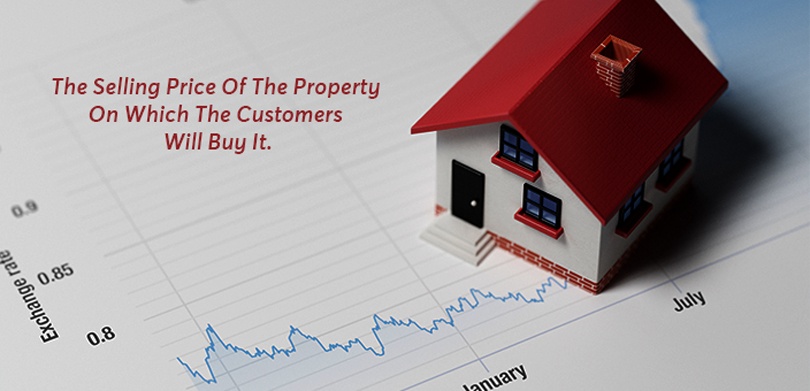
The market value of a property is the selling price of it on which the customers will buy the property. This will however exclude any unforeseen situation like relocation or demise of any family member where the family is forced to sell the property. the selling price of the property on which the customers will buy it
Hence, if you want to sell your property, it is important to know the actual market value of your property as per the customer’s demand.
Factors Affecting The Market Value Of Property
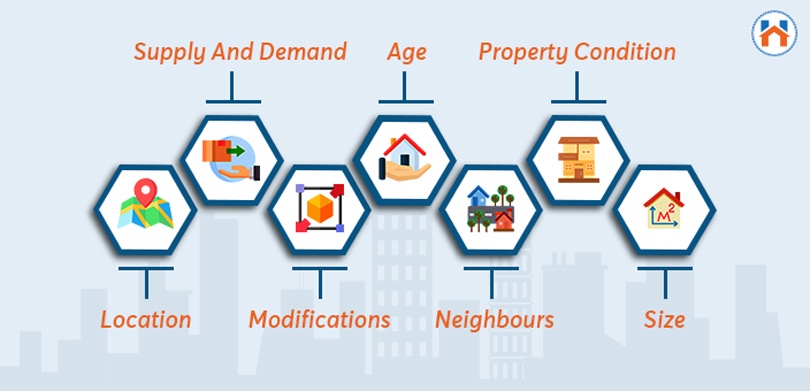
The market value of a property depends on many different factors which affect value. These factors are explained in the following points.
- Location of the property: This is one of the common factors in deciding the price of any property. If the location is near any prime location, then you will get a good market value for the property.
- Supply and demand: The market value of the property will be determined by the market condition. The demand for the location and the amenities in the market will decide the market value of the property.
- Modifications of the property: If your property is modified with any new specification, then it is possible that you will get a better market value of the property while selling it.
- Age of the property: The newer properties get more market value compared to the old properties.
- Neighbors: The neighbors of any property are one of the main factors in deciding the market value of the property. If your house is located near-criminal activity, then it is likely not in demand.
- Property condition: If the property requires any extra maintenance or update cost then the price will automatically reduce.
- Size of the property: The floor size of the property, number of floors, and number of rooms also decide the price of the property.
How To Calculate The Market Value Of A Property
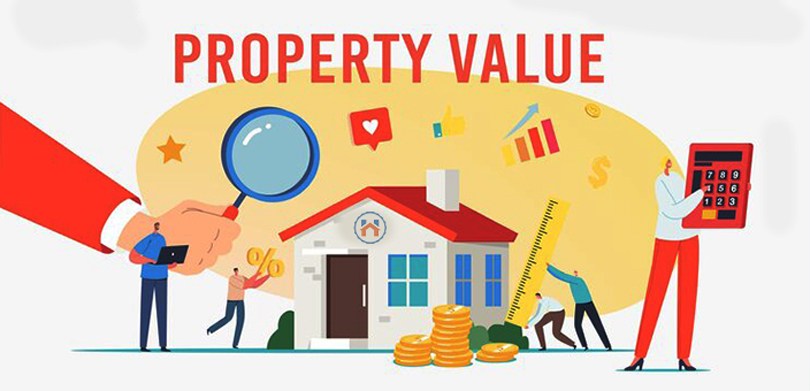
Before deciding on the selling price of your property, you need to know the market value of the property. There are Four types of property valuation methods and all of them are explained in the following points.
Types And Methods
Sales Comparable Method

It is also known as fair market value and it is used for ready-to-move apartments. You need to check the property price of your neighbour’s property consisting of similar property characteristics to yours.
Now, calculate the per sq. ft rate of a raw property
For example: A 3 BHK with the 1800 sq ft super built-up area and the rate of the property is 72 lacs.
![]()
Now, as per the rate if your property is near to the location then you can decide the market value of the property. If you have recently updated your property then the rate will be more.
Belting Method
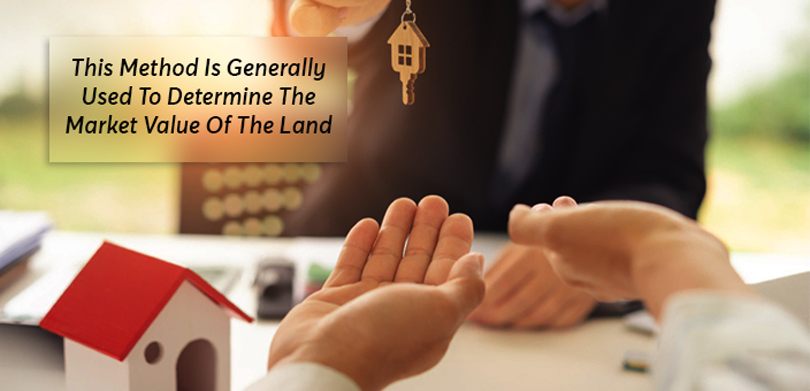
This method is generally used to determine the market value of the land. The entire land parcel is divided into three belts. The main focus will be provided on the part of the land which is closer to the main road.
The first belt can be 10ft long and the second belt can be 50ft long. The remaining part will be the third belt.
75% of the value of 1st belt will be assigned to the 2nd belt, and half of its value will be assigned to the third belt.
For example: If the value of 1st belt is worth 10 lakhs, then the 2nd belt will be worth 7.5 lakhs. Hence, if the area is beyond this, then the value will be worth Rs 5 lakhs.
Guidance Value Method
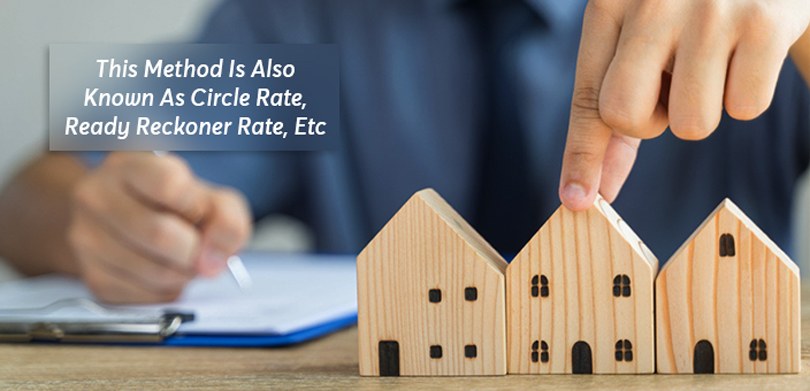
This method is also known as circle rate, ready reckoner rate, etc. This method is used by the state authorities who value the property to levy stamp duty, and registration charges over the property.
Hence, if there is a hike in the circle rate, then it will make the purchase price of the plot costlier. The government-specified rates can be higher compared to its prevalent price.
It is suggested to check the prevalent price of the property before fixing the selling price of the property.
Land & Building Method

In this method, the value of the land and building is calculated separately and then added to get the property’s final value.
For the valuation of the building, the reconstruction work is worked out at first, and then the depreciation will be calculated.
For example, if the reconstruction is done for 25 lakhs, then 5 lakhs will be deducted from the depreciation. Hence, the cost of the building will be Rs 20 lakhs.
Now, the rental value of the property will be multiplied by the net annual income to get the capitalised value of the property. Suppose the capitalised value is 55 lakhs.
![]()
Land value will be the difference between capitalised value and cost of building which is 35 lakhs.
Development Method
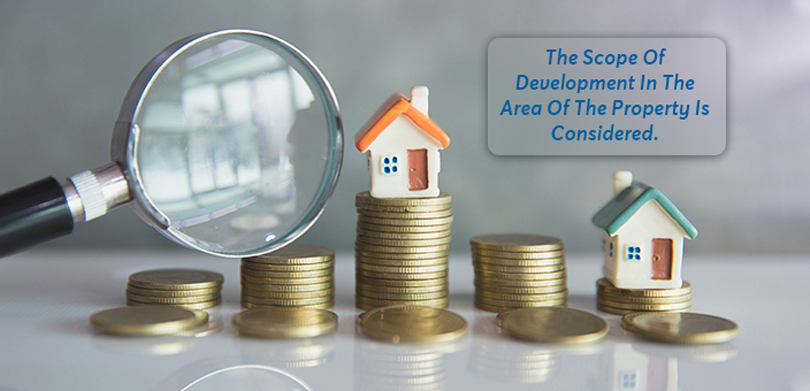
In this method, the scope of development in the area of the property is considered while determining the increase in the value of a property. This is one of the best ways to take the decision of buying/selling a property.
FAQs
| Q1: What is the difference between market price and market value?
Ans: Market value is the amount on which the property can be sold in an open market considering the broker’s fees. The market price is the amount at which the buyer is willing to buy the property. |
| Q2: Which are the factors that affect the market value of a property?
Ans: The factors which affect the market value of a property are the Location of the property, Supply and demand, Modifications of the property, Age of the property, Neighbours, Property condition, and Size of the property. |
| Q3: What is the Fair Market value of a product?
Ans: The fair market value is the determined price of the property at which it will be sold in an open market. |
| Q4: Are property value and market value the same?
Ans: The property value is assigned and calculated by government professionals. However, the market value of a property will be determined by the seller of the property. |
| Q5: How many methods are there to determine the market value?
Ans: There are generally four methods of determining the market value which are the sales comparison method, belting method, guidance value method, and land & building method. |







